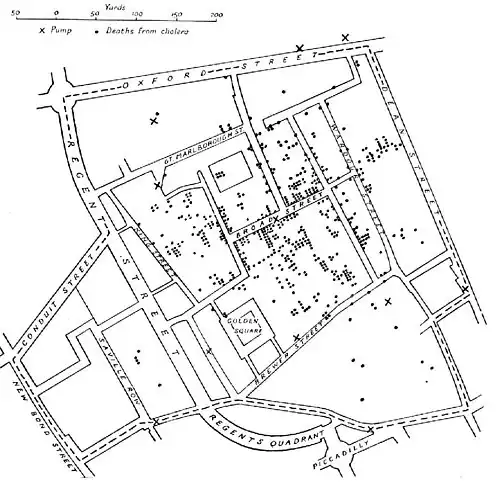Medical microbiology

One of the cholera incidence maps used to trace the source of infections to drinking water during the London cholera epidemic of 1854.
Introduction
Welcome to the medical microbiology course.
Medical microbiology is concerned with how the human body interacts with microorganisms such as bacteria, viruses, fungi and prions. Topics include the roles of non-pathogenic bacteria in normal health and disease processes that involve pathogenic microorganisms or an abnormal response of the body to microorganisms.
This course aims to cover all of the topics covered in an average medical school microbiology course. For other microbiology courses and content, please visit the more general Microbiology Department.
Recommended Prerequisites
- Biochemistry
- Cell biology
- Physiology
- Immunology
Lessons
Module 1: Fundamentals of Bacteriology
- Lesson 1: Introduction to microorganisms
- Lesson 2: The shape of bacteria
- Lesson 3: The bacterial cell wall
- Lesson 4: The gram stain
- Lab 1: Microscopy
- Lesson 5: The bacterial cell membrane
- Lesson 6: Bacterial cell surface appendages
- Lesson 7: The bacterial capsule
- Lesson 8: Inside the bacterial cell
- Lesson 9: Bacterial nutrition and growth
- Lesson 10: Bacterial metabolism
- Lesson 11: Bacterial biofilms
- Lab 2: Culture methods
Resources
- Infectious Disease and Public Health
- Introduction to Medical Microbiology
- Bacteria on your skin
- Sugar in the times of cholera - an account of a cholera epidemic in Cuba
See also
This article is issued from Wikiversity. The text is licensed under Creative Commons - Attribution - Sharealike. Additional terms may apply for the media files.